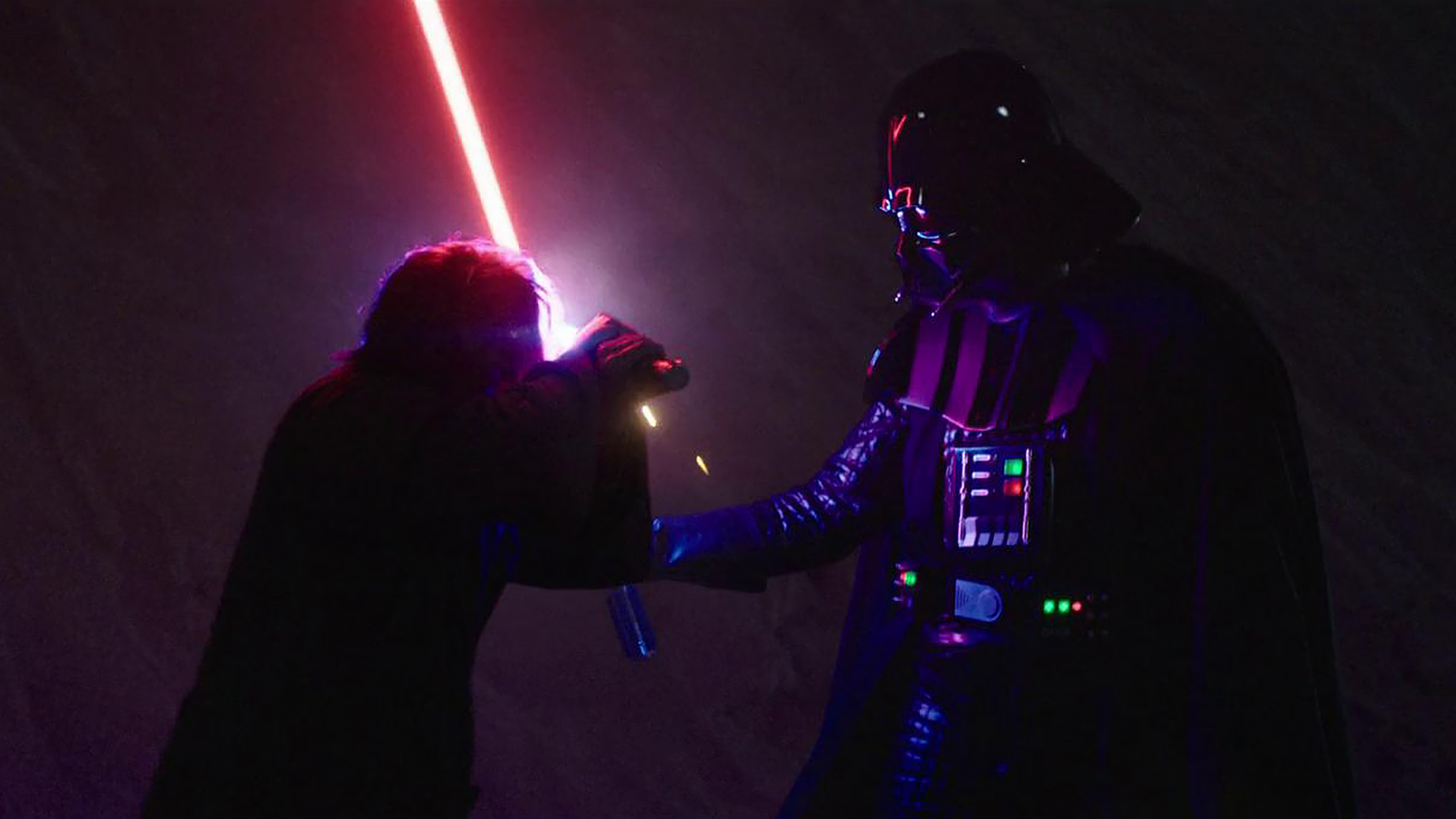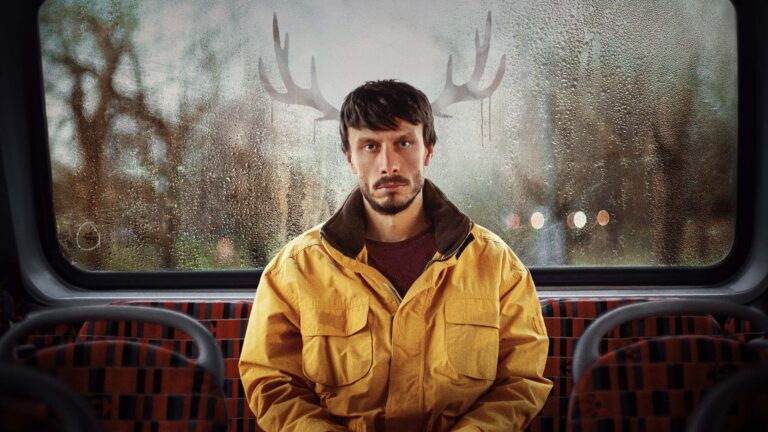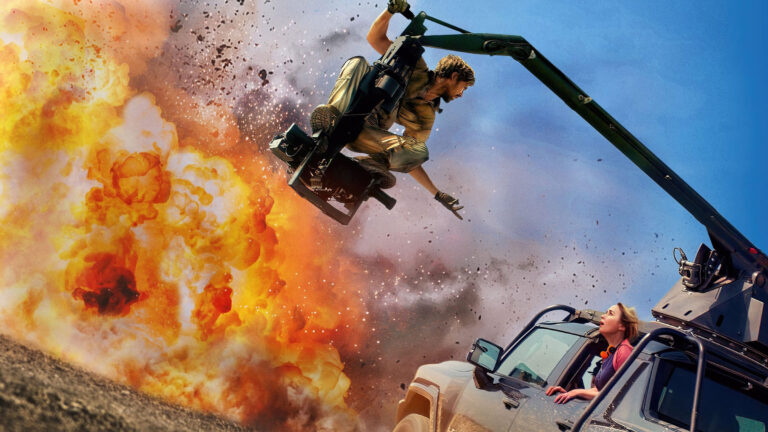The Obi-Wan Kenobi editing team of Kelley Dixon, ACE and Josh Earl, ACE have long been friends outside of the cutting room, but Obi-Wan is the first project they’ve shared. A five-time Emmy-winner, Josh didn’t have to think twice about Kelley’s offer to join the Lucasfilm series, ostensibly as her assistant even though he’s worked for years as an editor. A self-professed Star Wars nerd, he jumped at the chance no matter the role. As for Kelley, her plan was always to have Josh’s creative editorial talents shine through during post—culminating in a shared editing credit on the series finale that earned both another Emmy nomination.
Obi-Wan Kenobi takes place ten years after the events of Star Wars: Episode III – Revenge of the Sith (2005). In that chapter, the Jedi were purged with Order 66 and Obi-Wan Kenobi’s apprentice, Anakin Skywalker, became the Sith Lord Darth Vader. Kenobi is in hiding on the planet Tatooine, watching over Anakin’s son, Luke, when he is called on a mission to rescue Anakin’s daughter, Leia, after she is kidnapped by the Galactic Empire’s Jedi-hunting Inquisitors in a plot to draw Kenobi out. This leads to yet another dramatic duel between Kenobi and Vader.
In our discussion with the Obi-Wan Kenobi editing team of Kelley Dixon, ACE and Josh Earl, ACE we talk about:
- Bringing something from Breaking Bad to Tatooine
- Making the jump from editor to assistant editor?
- Being on location in “The Volume”
- Synthesizing new sounds for the Sith Lord
- Intercutting with lightsabers
Listen while you read…
Editing Obi-Wan Kenobi
Warning: this interview contains minor spoilers.
Matt Feury: Something dawned on me as I was getting ready for this interview. I don’t know how you two met. I don’t think you’ve ever worked together prior to Obi-Wan Kenobi. Since Star Wars is all about origin stories, I thought we should get the Kelley-and-Josh origin story.
Kelley Dixon, ACE: That’s actually a good story. It was 2012, and we were both asked to be on this Emmy Prime/Cuts panel, which is where they get a bunch of Emmy nominees together that year and put them on a panel.
I didn’t know Josh. I had no idea who Josh was. There was another editor there named Kabir Akhtar, ACE. There were a bunch of other panelists, but Josh, Kabir, and I gravitated toward each other because, when the moderator called on us, we actually had something fun to say.
Who was the moderator? I think it was the dude that used to run The Shield.
Josh Earl, ACE: I think so.
Kelley Dixon: He said something like, “What is your best advice in the cutting room?” Josh said, “Don’t be a dick.” I was like, “That dude!” After the whole thing, we became friends.
Josh Earl: I stand by that statement still. Don’t be a dick. I might as well get that tattooed on the back of my neck.
MF: If that doesn’t win you an Emmy, Josh, I don’t know what will. Kelley, in recent years, I know you’ve been doing things like The Falcon and the Winter Soldier and Black Panther: Wakanda Forever, things that involve big action, lots of visual effects.
But I’m sure the projects that first come to mind when people discuss your work are shows like Breaking Bad and Better Call Saul, real true-to-form, dramatic, largely dialogue-driven shows.
Do either of those things play into how you got Obi-Wan Kenobi? Was there something specific about your background where they said, “This is what we’re looking for from you?”
Kelley Dixon: Yeah, that is true. My agent called me up in November of 2020. He said, “Hey, Star Wars is doing a streaming thing on Obi-Wan Kenobi and they want to talk to you.” I asked, “Why? What is Star Wars calling me for?” I was really flattered, but I just didn’t know. I like Star Wars, but it really isn’t in my natural wheelhouse. It’s a lot more action-based. The drama is not really high drama. It’s an interesting and intriguing drama, but it’s not like the real deep stuff I was used to.
The director, Deborah Chow, got on a Zoom with me and said, “We are looking for somebody who’s good with drama. We’ve been looking for you for a couple of years, but you’ve always been way too busy.”
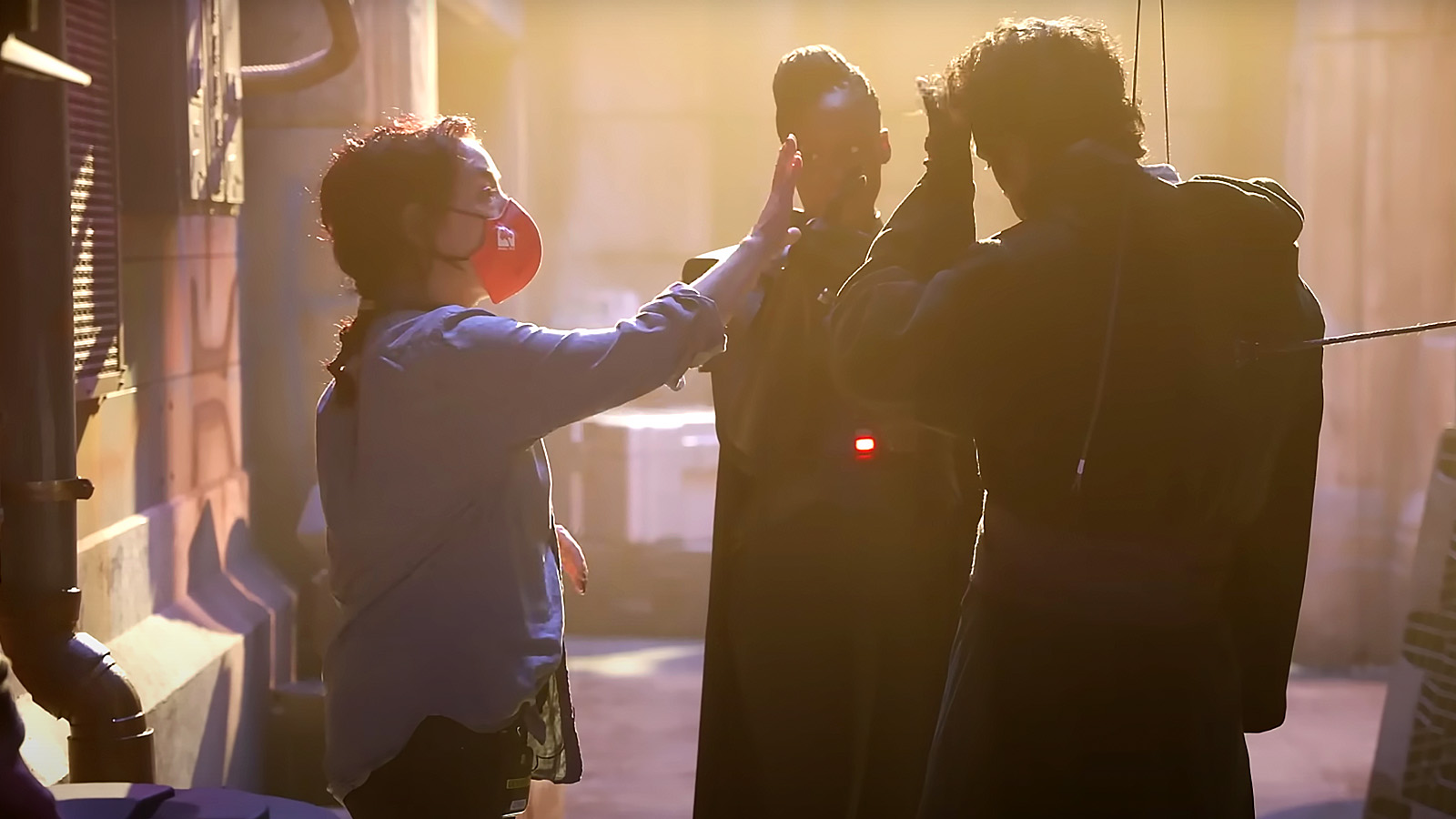
I was really shocked. I called my agent and I said, “Lucasfilm has been looking for me for two years!” He had no idea. So, I read the scripts. To be fair, I actually had to get the job before they let the scripts out. Deborah convinced me that there was going to be a lot of drama and it was going to be different from a lot of the Star Wars that we had seen before.
I was also interested because it was very feature-driven. They had one director for six episodes. They were going to shoot it like a feature film. They were going to cut it and post it like a feature, too. I was really looking for that kind of experience rather than an episodic experience, which has different directors and a showrunner.
Then I read the scripts and I was all in. I thought the scripts were really great. I was excited about how deep the drama went with Obi-Wan himself and how he was full of self-doubt. The way he had to grow throughout his journey was something that we hadn’t seen in Star Wars before. It stayed true to all the Star Wars lore and excitement, but it wasn’t just lightsaber battles and spaceships. Obi-Wan Kenobi is about this guy who is dealing with fallibility.
Josh Earl: His inner bullshit. Tons of inner bullshit.
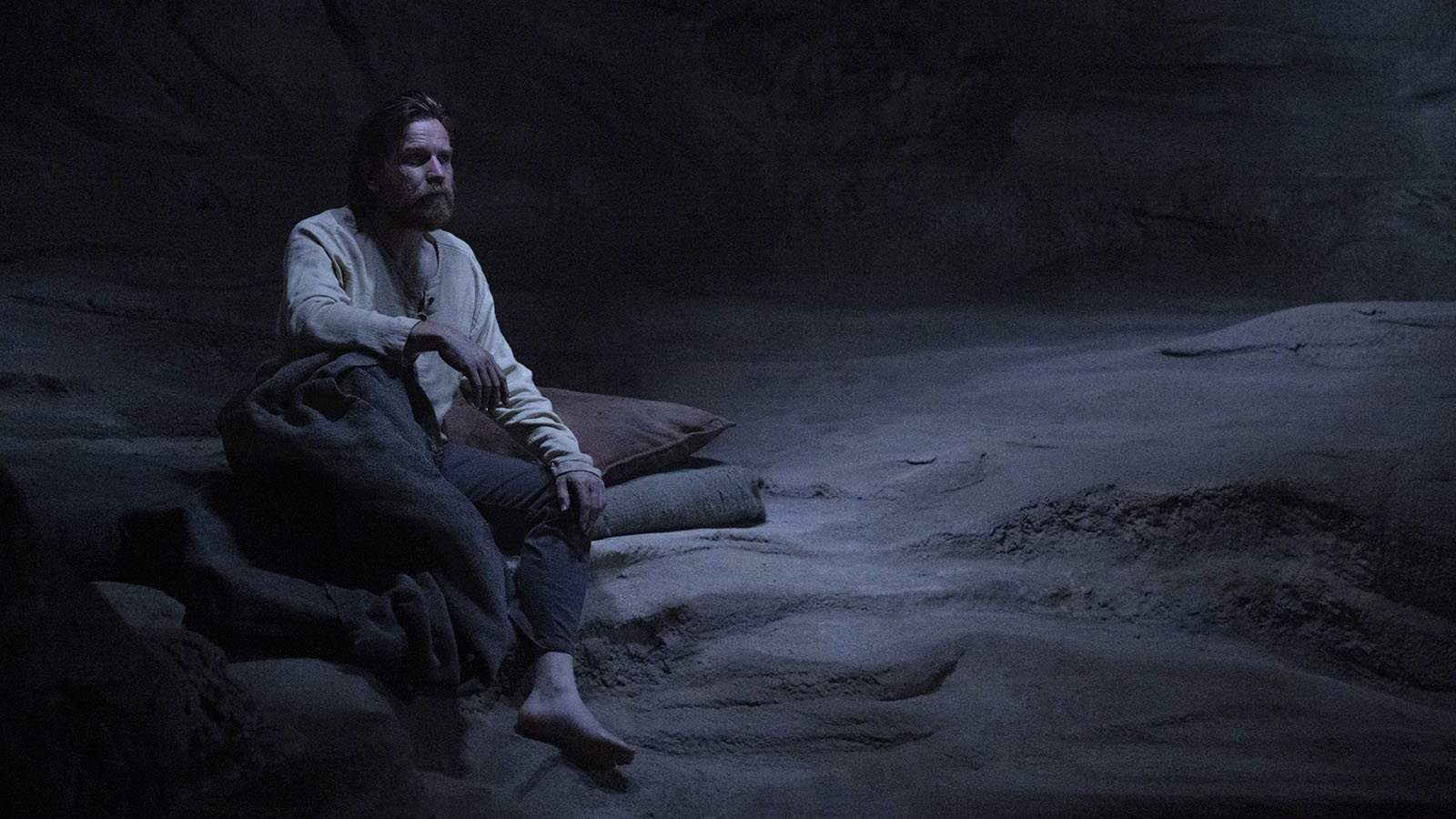
Kelley Dixon: And we got to see it onscreen, which is something I feel like we don’t get to see a lot in Star Wars.
MF: That’s an interesting point about his inner turmoil. Sometimes I’ll ask editors about the information that they have to work with, and they’ll say, “It’s what’s in the script, it’s what’s in the dailies, and it’s in what the director and I talk about.”
Then there are others that really take it upon themselves to dig in, almost like an actor would. Do you go back and watch earlier storylines and take notes?
Kelley Dixon: Josh knows all this stuff! I definitely went back and watched them all. I watched all three of those prequel movies because it had been a long time since I saw Obi-Wan and what he was about, and what that relationship with Anakin Skywalker was. So I went back and did it.
In general, I do as much research as I can. I was talking to a friend yesterday, and I said, “If I’m approached by anything that has a book, I will read the book before I talk to the director or interview for the job.” I think every single time I’ve researched, that research has gotten me the job. They seem impressed that I actually spent the time reading it.
Also, you get some information with a script. But a script is 150 pages and a book is 700 pages. You’re going to get a lot more from the book, and you’ll be able to draw from all of that source material at any stage.
For this, I definitely went and watched all the movies because I personally didn’t remember. I don’t think Josh had to do much research.
MF: For the folks playing at home, Josh just held up his lightsaber.
Josh Earl: This, my friend, is Obi-Wan Kenobi’s lightsaber, from our show. Hasbro, baby.
MF: I thought you stole it!
Josh Earl: Listen, if I got anywhere near that saber with intent to steal, three droids would have murdered me from the rafters. They would have dragged my body out with the mouse droid. That would have been it.
In the year leading up to this show, I watched all the movies with my kids without even knowing about the show. It was in revisiting Revenge of the Sith where I realized, “This isn’t as bad as I once thought it was.”
It’s one of those weird situations where, like, I told Kelley when I read the script, it was—
Kelley Dixon: He didn’t get to read the scripts until after he was hired, by the way. You don’t even get them when you say yes to the job. They have to go through the legal department contractually, get your whole signature, and then finally they’ll get you the script.
Josh Earl: I just got it from a Star Wars website. It was out there.
Kelley Dixon: No! He did not.
Josh Earl: That’s not true. Not true. Please don’t kill me, Lucasfilm.
I had watched the movies leading up to Obi-Wan, and when it was time to read the scripts, I realized, “This is it. This is going to be my experience for Obi-Wan.”
So, the nerd part of me kicked in. I played music. I had the score playing in the background. I had the script up on a screen. I lit a couple of Tatooine-scented candles, sat down, and read it through.
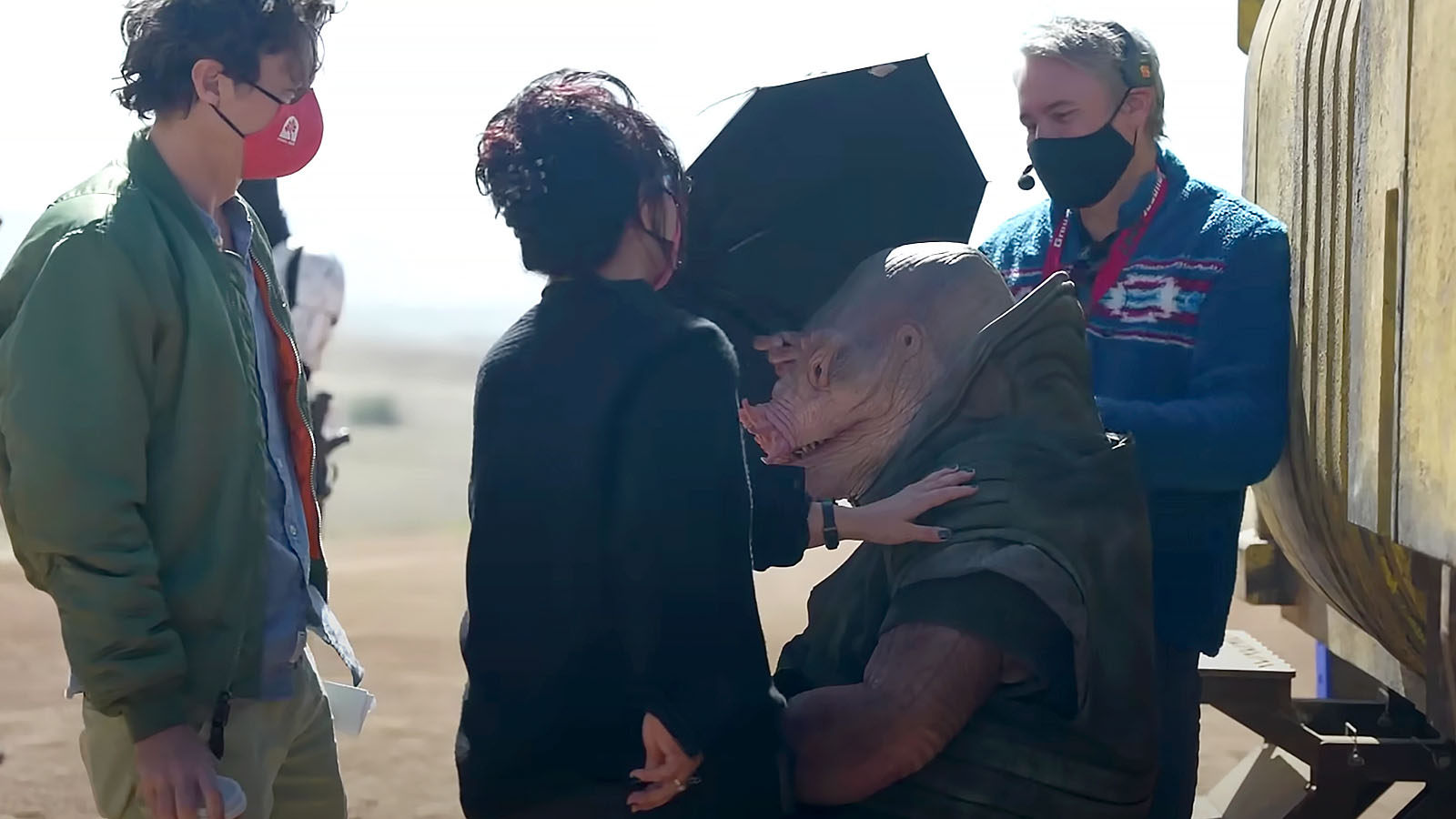
Randomly, Kelley would text me, “What part are you on? Which episode? You’re on three? What do you think of this? Okay, I’ll wait. I’m going to wait. And what’s happening in four? You see that?” I’m thinking, “Hold on, I’m trying to absorb! I want to really love it.” Because after this, I have to turn off that nerd part. Now it’s time to tell a story and make it awesome, aside from my own guilty nerd pleasures.
MF: Guilty nerd pleasures? That sounds like a Showtime series that I would definitely not watch.
Josh Earl: It’s After Dark. You guys don’t want to see it. It’s weird.
I wanted to know what headspace Obi-Wan was in, so I did re-watch Sith just to see. I didn’t really remember how he left off, mentally, or how broken he really was. At the end of Sith, you see that everything just crumbles for him. He’s lost a master, he’s lost the entire Jedi order, and he’s basically brought about the coming of the Dark Lord without knowing it. He only knows that his Padawan is one of the darkest people to date.
Little does he know, he lived! And surprise, he’s coming for you. He’s been looking for you, buddy. He’s been searching the galaxy.
Kelley Dixon: He’s also given up everything that was his life before. He’s realized, “This is the world now, and I have to figure out my way in it.”
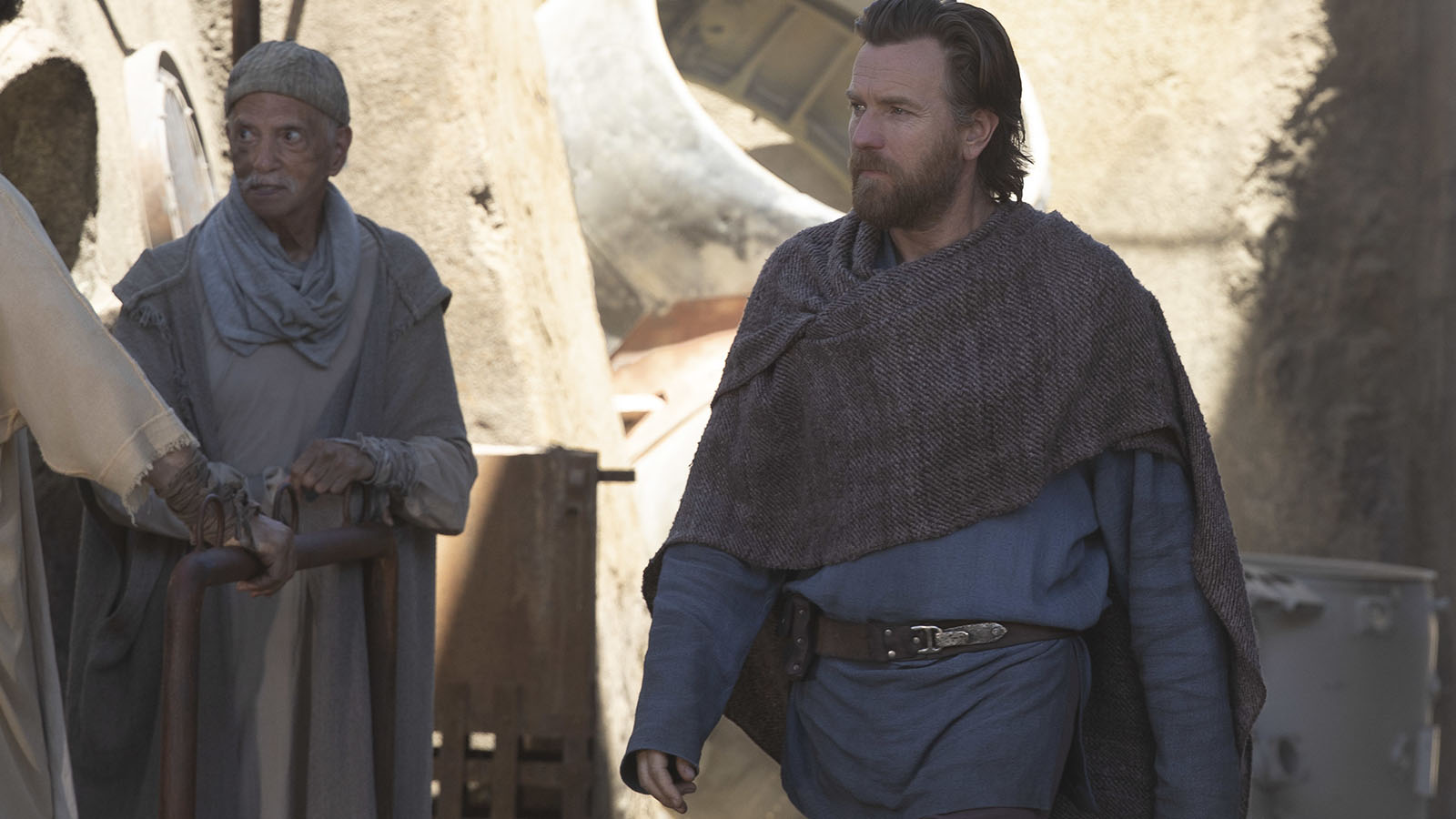
He’s even approached by another Jedi, and he says, “Look, that ain’t me.” He has turned his back on all of it because he’s realized that, aside from his own responsibility in all of this, “We lost. We’re done. You’d better hide if you want to survive.” He’s not dating. He’s just a dude living in a cave.
The thing about working on this is, we all know what comes next. That’s the interesting thing about working on anything, not just this, but anything where you know what comes next.
I worked on Better Call Saul. I said, “Well, we know how this all ends.” It’s the really talented people—I’m not talking about myself. I’m talking about the writers, the people who conceive this kind of story. It’s about how they can keep the drama great when we know the rest of the story.
To me, these scripts are not only about Obi-Wan. They’re also about this character we haven’t seen before, Reva [played by Moses Ingram]. She was super interesting to me. I had no idea where it was all going with this girl throughout the episodes.
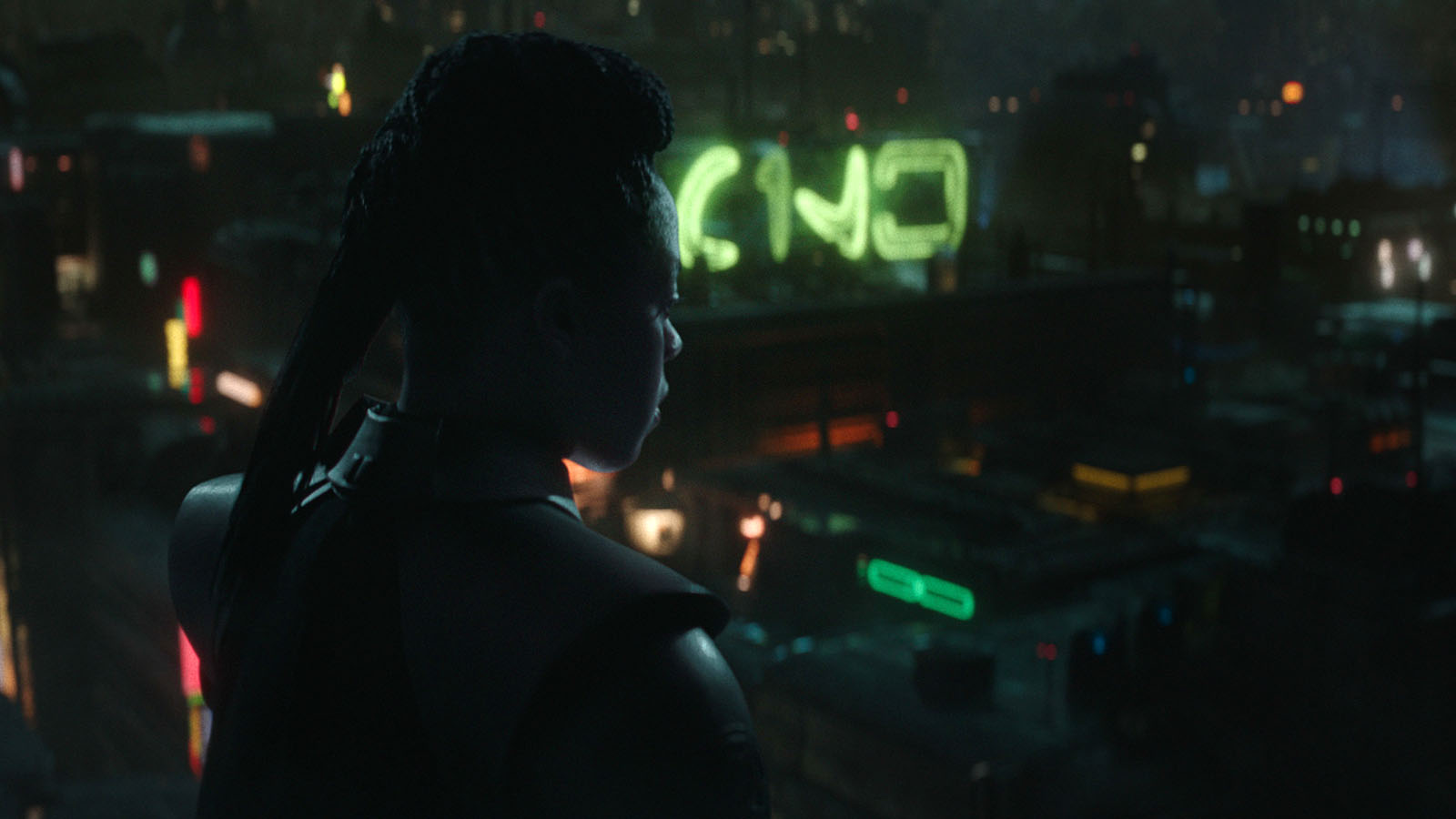
I didn’t read ahead. I was just really intrigued about her agenda because, like I said, we know where Obi-Wan is going, and his inner journey was very interesting to me. But this character had an outward agenda that would switch and change. I thought the scripts were great, but Josh is a real huge Star Wars fan. I asked him, “Does the fan side of you like it? Also, what do you think of the Reva story? What do you think is happening here?”
MF: Hang on a second, I’ve got to… “Kelley, you’ve worked on both Better Call Saul and now Obi-Wan, where you already know the outcome. How do you keep up the drum?” Okay, I scratched that off, because you nailed that one for me. That was the next question.
But you know what? I’m just as excited about the question after that. It’s about you, Josh. Not only have you been a lead editor for a while, but you already have five Emmy awards on your shelf. I can’t believe they’re not visible in your webcam.
Kelley Dixon: Yeah, show them!
Josh Earl: They’re on the other side. I’ll show you in a bit.
MF: When you got the call from Kelley, it was about being her assistant on the show. Now, spoiler alert, you’re co-nominated as editors together for the finale. Some people might say, “I’ve got five Emmys. I’m lead editor.” What was it like when Kelley called you? What was the pitch, and what factors did you consider in taking this job?
Josh Earl: First of all, Kelley is amazing. She has called me before. There were a couple of times where I was already supervising a series. I couldn’t leave in the middle. She called and said, “Listen, I just want to ask, do you want to do this thing?”
I’ll jump at any opportunity. That’s something that I think anyone would do in this industry, if you’re serious about it. I have no ego when it comes to this stuff.
What is your best advice in the cutting room?” Josh said, “Don’t be a dick.”
Kelley asked, “Do you want to work on Obi-Wan with me? It’ll be fun. You’ll cut, you’ll come in as the first assist, but I’m telling you, we’ll have a blast.” I said, “Obi-Wan? I’m in. I don’t care. Just sign me up.”
The hurdle was, Lucasfilm wasn’t looking for someone like me. That’s just the truth of it. They were putting it out to agents, and looking for people who have certain credits. I’m not on their radar.
The amazing part was getting to talk to the head of Lucasfilm’s post-production and the pitch. Kelley put me up for the job initially. She said, “Here, call him. This is the guy. You got to call him.” They went, “Does he want to do it? Does he want to jump over and do this? You sure we’re going to call him?” I was over here saying, “Tell them to call me! Don’t worry about it. I just want to talk to them. Let me talk to them!”
Kelley Dixon: They actually called me and said, “You know, Josh is actually quite an established editor…”
Josh Earl: But it was not even a question in my book. So they called, I talked to them for a little bit, and I told them exactly what I’m telling you. “Hey, put me in there. Let me play in the sandbox. Let’s see what we can do.”
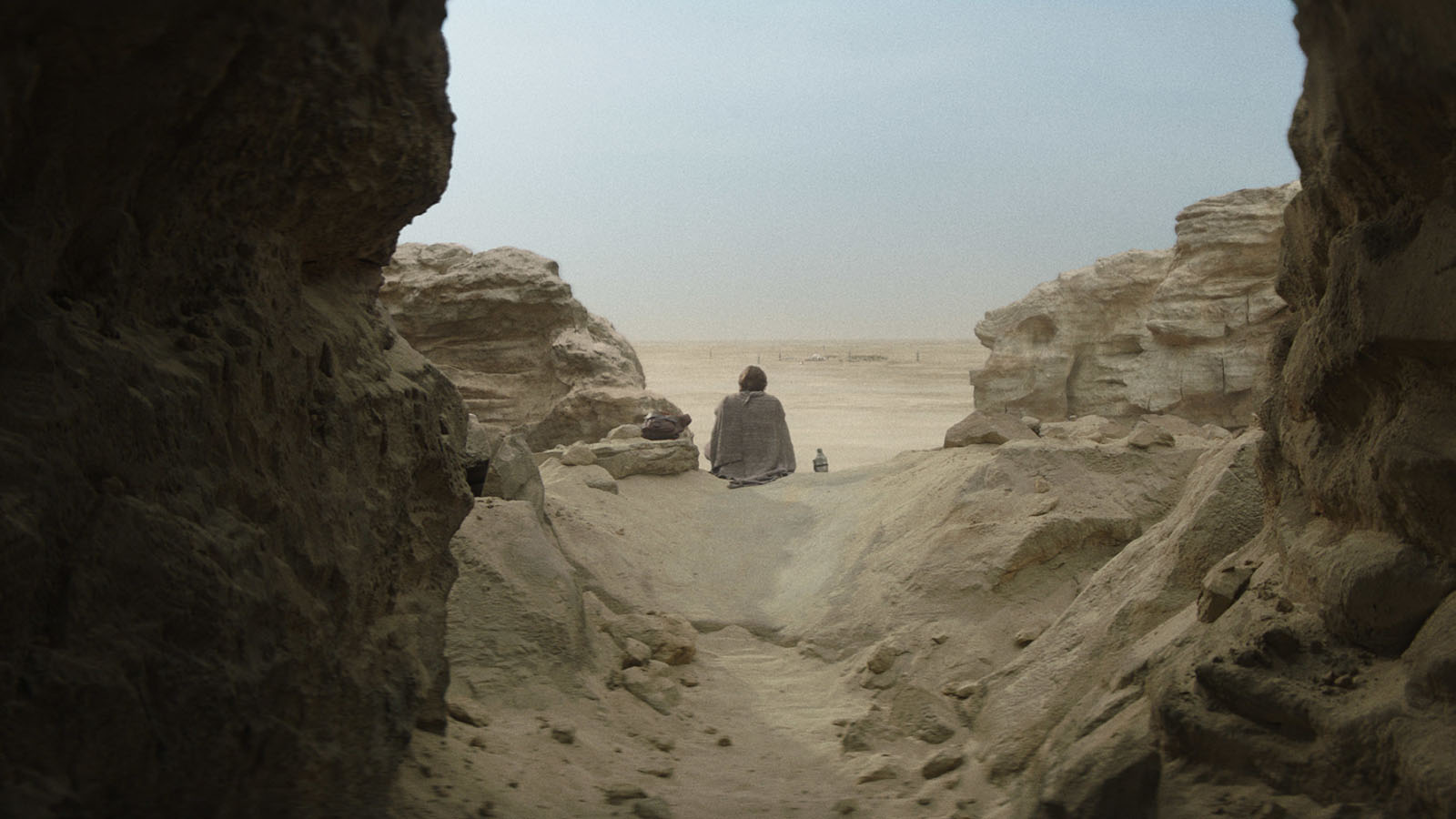
The other first assistant editor, Ken Terry, who’s amazing, and I talked about it. I said, “I do my own scripted stuff, because I’m an indie guy. I have done all my scripted stuff by myself. But I know everyone’s got rules, and I’m ready to go. But let’s hop on this.” Ken said, “I’m more of a tech guy. You’re the creative guy. This should be a pretty great friendship.” And it was.
We also had a second assistant editor, Gioia Caruso, who was actually a first in her own right. She’s amazing. She was another person who was super helpful in my world. I came in going, “I’m open. Let’s do everything. Whatever comes my way, I’m just going to do it.”
Unscripted is a really big teacher, not to mention doing it yourself. I had to do the workflows on my own. Having a structure was better than the way I do things, where I can’t teach it to you, but I know I can do it. I know I can get it done. It all started that way. I started a week earlier than Kelley, and I was poking around, meeting the crew and everything.
But when Kelley jumped in, she said, “Let’s go to set! Let’s go talk to Deborah Chow. Let’s get right in there.” So we’re on set, and Kelley just laid it out on the line. She said, “Josh cuts, I cut. You have two cutters in one room.”
To Deb’s credit, she did not have to be as cool as she was. She said, “Neat. All right. Anyway, here’s the set. Come on down whenever you want.” I don’t need an excuse to go visit a Star Wars set, first of all, but going down there with a purpose, to say, “Do you need anything, Deb?” was amazing. The comfort level was built in before we even sat down in that room together.
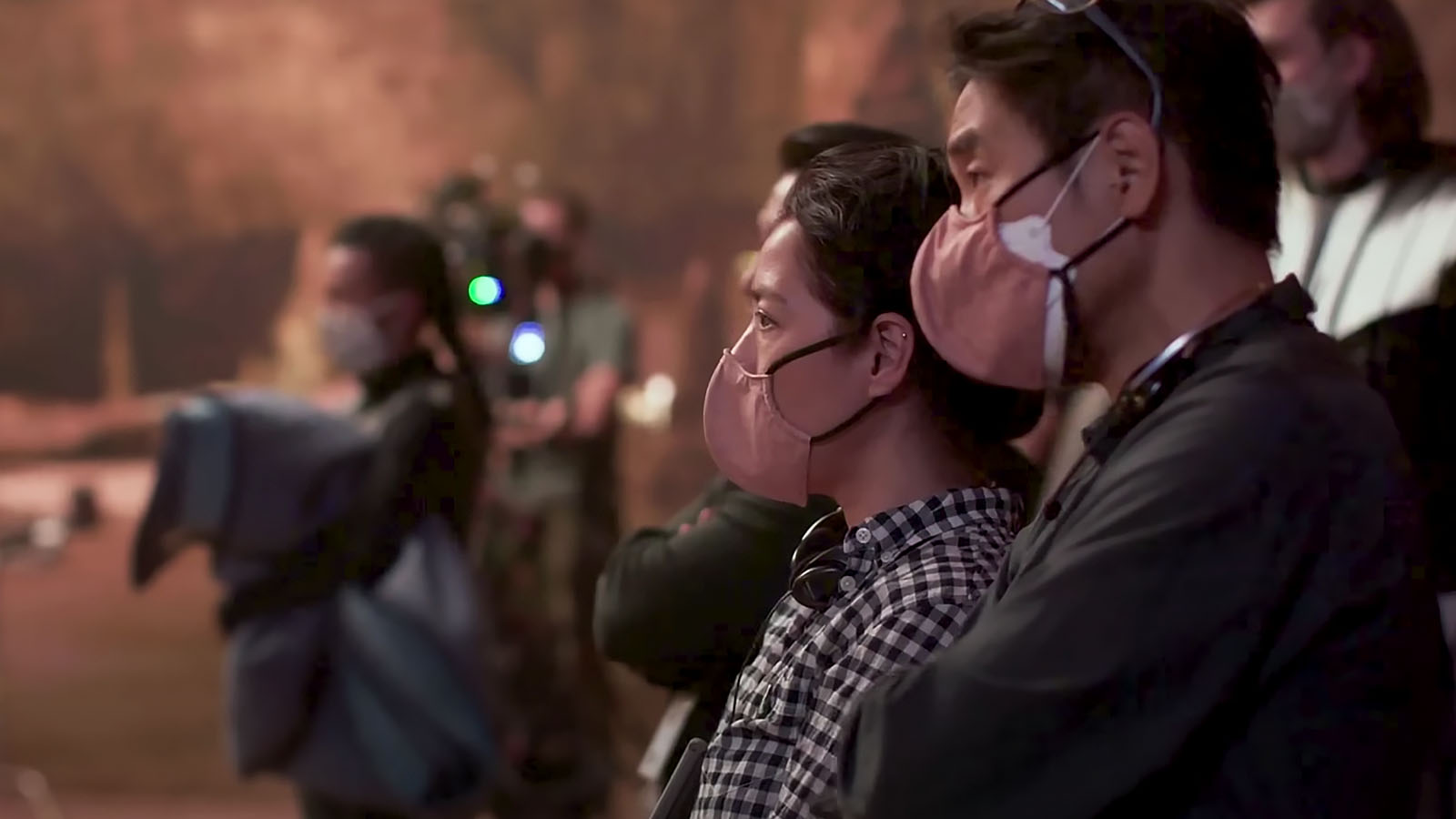
Kelley Dixon: I first called Josh when I got the job on The Falcon and the Winter Soldier. I already had an assistant that I had worked with on a couple of things, but he was busy. His name is Taylor Ervin, and he still works for Marvel. They want to keep him forever. I called Taylor and said, “This is a really good opportunity,” and he said, “Yeah, but I’m in the middle of this and that.” Then I called Josh and said, “I don’t know if you’re interested, but I’m on this Marvel project. I’d rather not go with somebody I don’t know. I’ve got to go on location.”
That was a bigger deal, because Josh has two kids, a wife, a house, and all that kind of stuff. It was going to be harder for him to go to Atlanta for four months.
Then Taylor decided that it was a really good opportunity. It was pretty life-changing for him. But when I got the call for Obi-Wan, Taylor said, “I can’t do it,” so I was in a pinch. Then I called Josh again and said, “Something else has come up.” And Josh was in.
We don’t really like to talk about it. Josh is an editor in his own right. But I will say, to his credit and to the credit of the show, that our intention was always to have Josh cutting. Sometimes in the real world you have to use these things as a stepping stone. This was a great stepping stone. I told Josh, “I want them to see you cutting. I don’t want them to only see you doing dailies or color or visual effects. I want them to see you cutting.” Then they become very comfortable, hopefully, with this assistant or this person cutting.
Also, I wanted to ensure that, when I brought up the idea of sharing editing responsibilities with Josh, the response wouldn’t be, “Uh, let’s think about it.” I wanted it to be, “Oh yeah, sure!” And that’s what happened.
I told Josh, “We’re going to play this very slowly. Let Deborah see you cutting. Let her start working with you on her own.” Then Deborah started saying, “Let me go in Josh’s room and work with that.”
Josh has a great personality. All Josh needs to do is be in front of people. He starts talking and they fall in love with him.
I always had the intention of sharing episode six with Josh. I’ve shared credit with a lot of assistants. The issue is, usually, “Does it cost us anything to share?” That’s usually the issue with production. “Does it cost us anything? How does it affect what we have to do other than just going in and changing the credit?”
It does cost them something. I’m not sure what all the rules are, but I know that they have to make sure that there’s enough assistance for an additional editor. If there’s an editor, there has to be enough assistance, and we had enough assistance for Josh to be cutting. I think this is the first time that we’ve ever really been public about that whole story. Right, Josh?
Josh Earl: I think so. Most interviews are so quick. This is the place to talk more about how it all went down.
Kelley Dixon: I want other people to know about this. First of all, I want assistants to have some hope out there. But I also want to show editors, if they have this inclination, how to actually do it so you don’t cause an uproar.
Sometimes you have to do it very slowly. That’s how I worked on Better Call Saul, getting Chris McCaleb, ACE moved up. He started on the last season of Breaking Bad. I told him, “I want to share a credit with you,” which had never been done. We had never done that before. I said, “I want to share a credit with you. But every time they come up to editorial, I want them to see you cutting.” They did, so that’s how we worked it.
That one was a little harder. It was, “Okay, how do we pay him?” But it worked because they were already comfortable with him.
MF: You both casually talked about, “Hey, we’re just going to go down to set.” In this case, the set is The Volume, which is a unique experience for an editor to be a part of. What benefits does The Volume technology have for editors? Are there any negative impacts that this technology has on the way you work?
Josh Earl: I think people should definitely go check out the documentaries they did for Mandalorian and Obi-Wan on Disney Plus. It’s a really good way to see what we’re talking about.
The Volume is an insane thing to step into, physically. We got to step into an Imperial hangar at Fortress Inquisitorius. There was no one around. The crew was at lunch, and we just walked in. Kelley and I both stopped for a second, saying, “Holy cow.” It is a two-story screen that wraps around your head. It’s incredible.
One of the first dailies we got was a later scene, where little Leia is putting on her belt. She’s got her holster and she puts on the gloves and all those things. In those dailies, she’s on Alderaan. The practical set was morphed with The Volume background set. The digital sets were already in place.

When you’re looking at footage, you’re not waiting on, “We need to composite a quick Alderaan in the background.” We’re not looking at a green screen. You’re cutting what it will ultimately look like, with a little bit of VFX cleanup. That was incredible to me, because you could get your emotion.
You can just worry about what you usually worry about in the dailies. You’re looking for the proper takes. You’re looking for those little moments of emotion, those little tiny, itty-bitty things, instead of worrying about, “Do I need to get this temp in so that there’s a background?”
We didn’t have a lot of greenscreen, bluescreen stuff. It looked like they were there. It was ready to go in the dailies. Granted, VFX had a ton of work to do, cleaning it up and getting these little things together. “That hallway is going to be this narrow, not that narrow,” or “The lighting is different.” They would tweak that infinitely throughout. But the sets were basically laid before you in those dailies. For a Star Wars project, that’s pretty incredible.
Kelley Dixon: The first time we saw The Volume it was the planet Daiyu. It’s really big, it’s soundstage size. It’s got to be one square city block or something, right? I remember we were squinting because we couldn’t see the end of it.
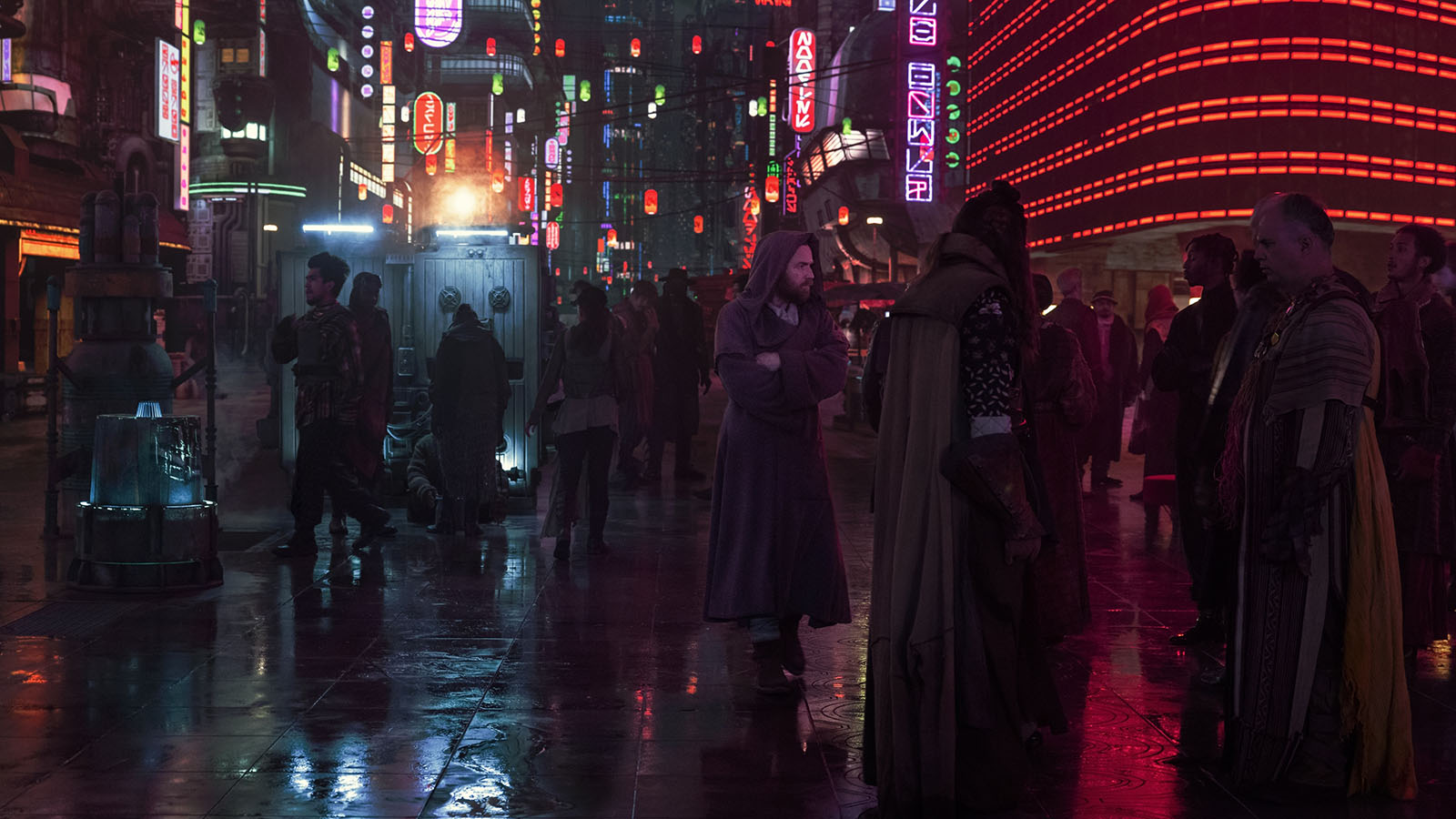
We said, “We can’t figure out what’s real and what’s not.” That’s how good the visuals on The Volume screen are. Then, when you get really close to it, it’s a lot of little dots. It’s pretty neat.
Josh Earl: Not to mention that The Volume can adjust the lighting on a dime. Cinematographer Chung-Hoon Chung could put a laser pointer in an area and go, “I want a key light here” and a big circle would show up, and it would be white light. He just put it there so it would reflect properly, and he’d just choose areas.
Granted, there’s way more in-depth lighting going on than that. But there were times where he’d say, “I want more right here,” and he’d pick the areas. Then, just like in Photoshop, the brain trust would make a circle. That circle would act like a giant light that exists on the left panel, which would then light up anyone who’s over by the right panel. It’s pretty incredible.
MF: Does The Volume accelerate your process, by removing certain steps that you might normally have?
Josh Earl: Maybe a compositing one?
Kelley Dixon: I don’t really have an answer for that. It didn’t really change anything for me. The previsualization situation is what helps them set up The Volume.
Previs is important for budgeting and figuring out what shots are going to be and how we’re going to tell the story. But for that situation, previs is extremely helpful for the needs of The Volume and what the background requirements for any shot are going to be.
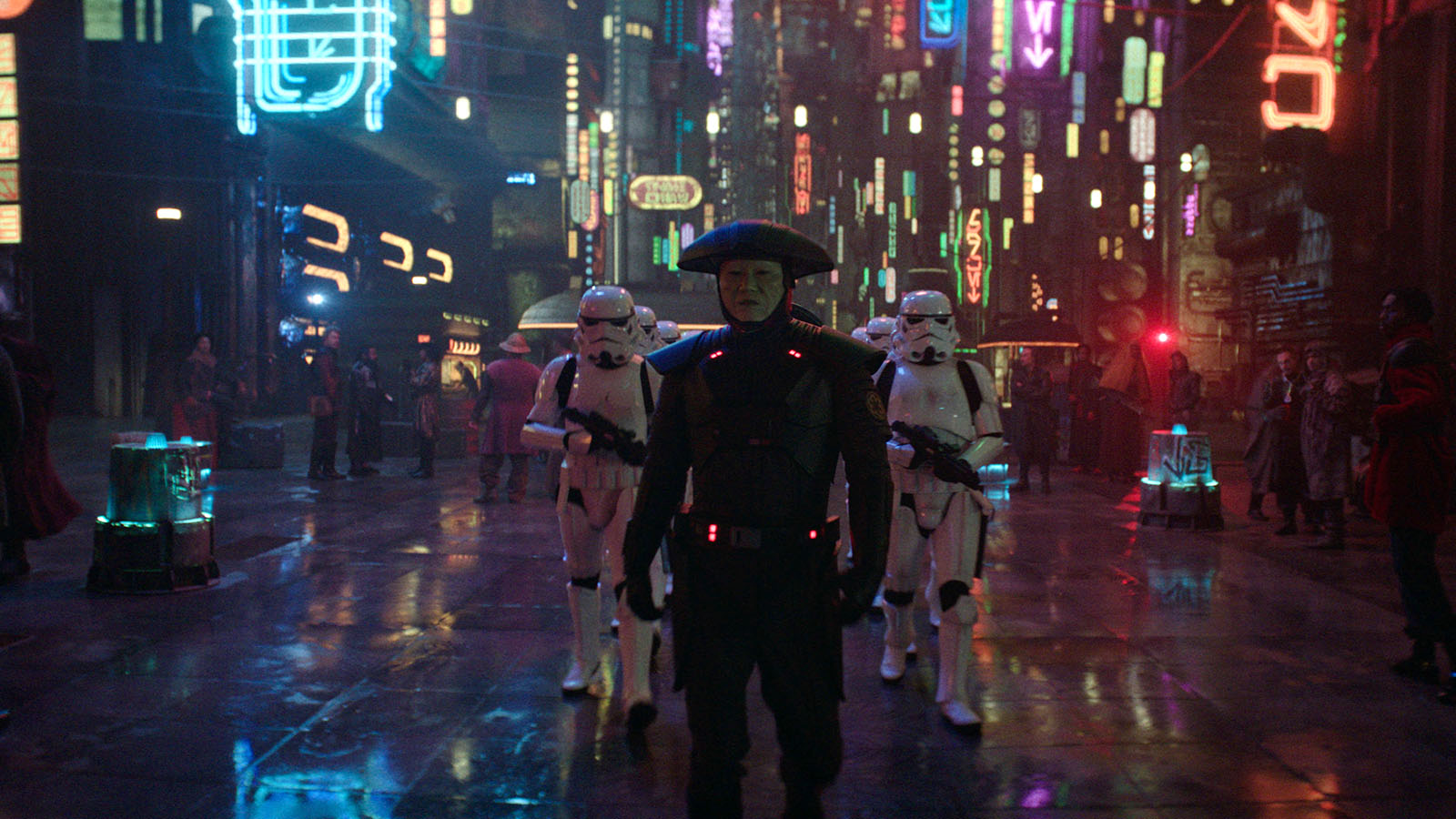
MF: What about the need for you to do any temporary VFX yourselves?
Josh Earl: We have “previs”, “stuntvis”, and “techvis”, right? You’re going to have all three of those, just so we know what the setup is.
But “postvis” is the secondary part. We had The Volume team. Deborah was amazing. She said, “Get them in here so they’re next to us.” They were next to my bay. When we wanted to create a shot, Deb would say, “Can you tell them to do this? The ship comes in and then this-and-that. Have them temp out that shot and we’ll see.” So, for a full-shot creation, that was cool.
One thing we had less of was temp compositing. Our VFX editors were Steve Rhee and Annie Mahlik, who are amazing. Steve would have times where he’d say, “Before it goes to Kathleen Kennedy, this blue screen needs to be a long hallway. Can you temp that in with some of the elements from The Volume?”
We didn’t have to do that as much. Because The Volume was there, and because it created these giant temporary digital sets, you didn’t have to do a lot of temp compositing. We usually put those temps into a rough cut and sent them out to people to show, “Hey, it’s going to be fine.” There was less of that.
There were times where we did temp compositing. In episode four, we had windows where it was all water outside. In Fortress Inquisitorius, they’re underwater. Those stayed bluescreen for the most part, but that’s because the hallways were all built or digitally there.
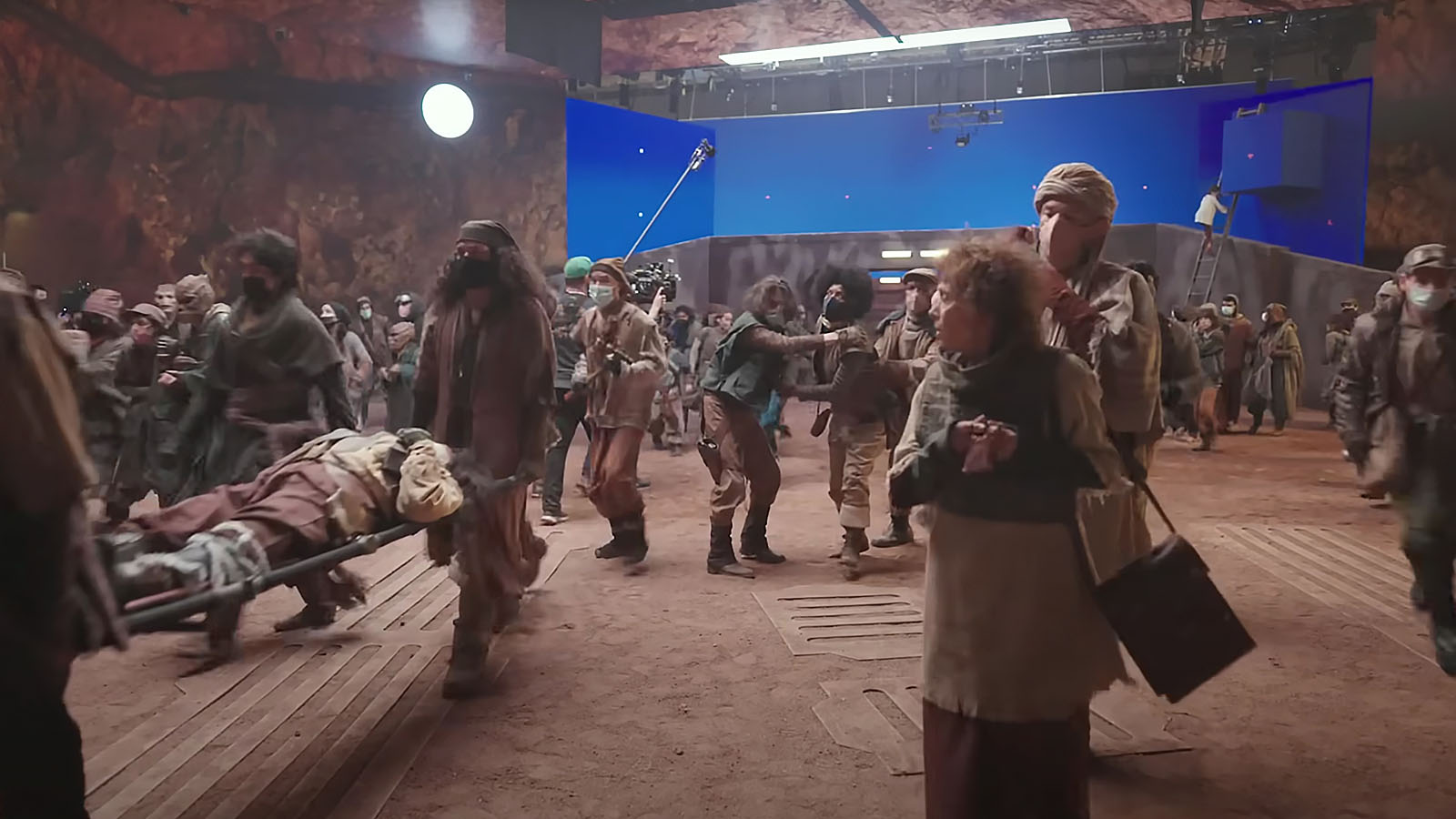
Kelley Dixon: One of the other things that were regular bluescreen sets were the rooftops in episode two. Those sets were all in a regular stage, with blue all the way around. We had to composite everything there.
Josh Earl: They just had to do less of it because of The Volume. One thing that had a blue screen, which I nearly nerd-melted all over, was the Imperial Star Destroyer, where Vader stands at the window. There was a blue screen outside the window.
Gioia Caruso, the other assistant, and I were walking through that stage, and the crew was changing something. We were standing there and I said, “We’ve got these badges. Can we just check this out?”
They said, “Yeah, go ahead. Do your thing.” So we walked up the corridor, walked through the pathway to the front of the window. I thought, “Oh my God, I’m going to throw up. Do we want to lose our jobs and we take a picture of this? What’s the deal here? Because I know a droid is going to murder me the minute I pull the camera out.”
So, we stood quietly. I didn’t take out any camera. I just stood at the main window of the Star Destroyer, just staring, shooting lasers, but at bluescreen. There was no Volume there.
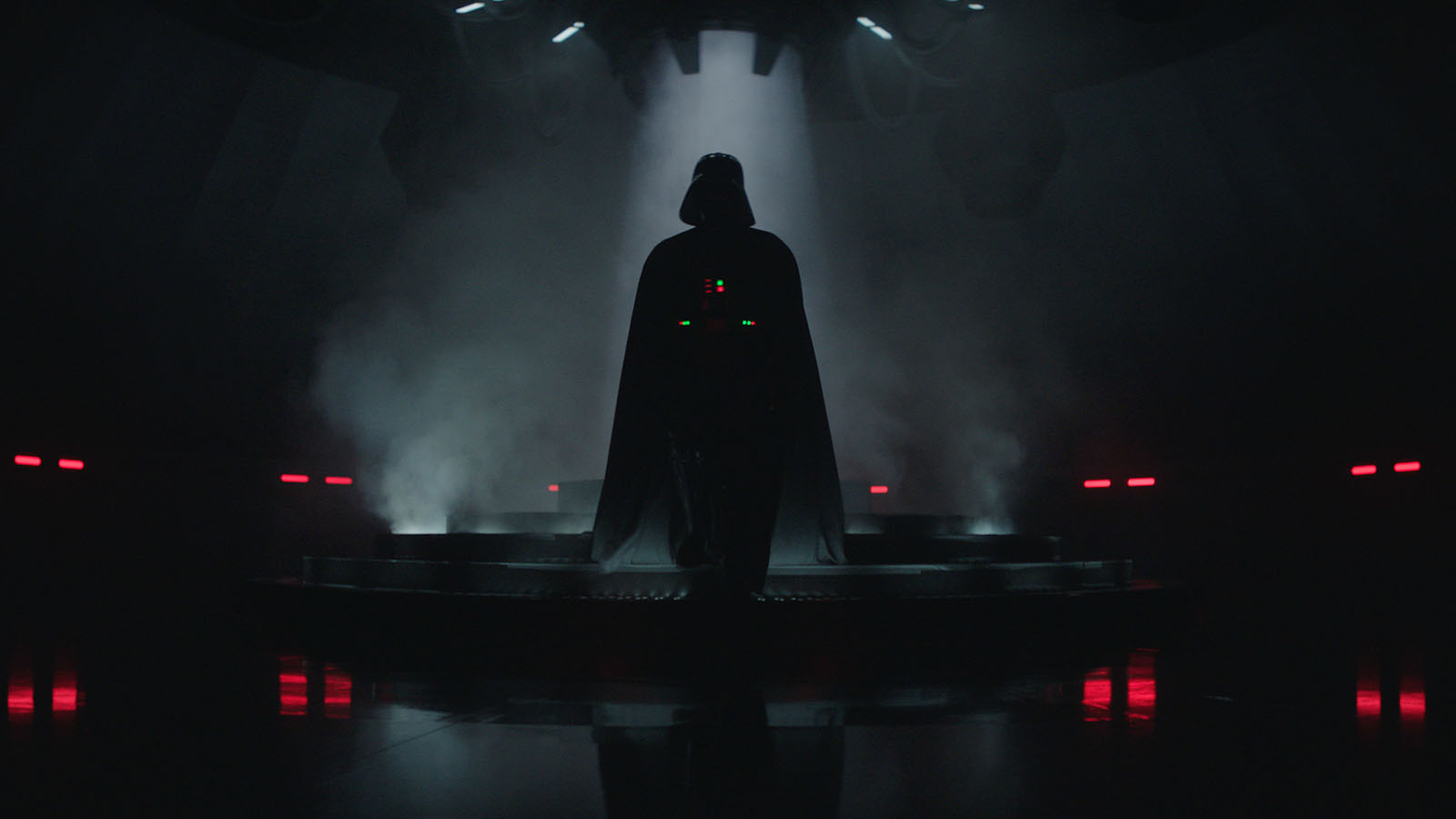
Kelley Dixon: There was one instance, I think it was during the shooting of the big final battle. We were down there for something, I can’t remember what, and there was the props guy who handles all the lightsabers. It’s pretty interesting because he had all kinds of different lightsaber hilts for different instances. They had ones that had the beam on them and lit up.
The crew were waiting for some technical camera thing to happen, and somebody handed both sabers to me. I was like, “Oh wow!” Then, our production manager, Thomas Hayslip, who does really big stuff—I think his name is on Oppenheimer—whipped out his cell phone to take a picture. My first instinct was horrified because I thought, “You can’t take a picture!”
Then I thought, “Well, this dude is an executive producer.”
Josh Earl: And they killed him. They just shot him dead right there. It was insane. He just got vaporized.
Kelley Dixon: What happened was, they were ready to roll, and they took the lightsabers away from me. We never got that picture. But it was pretty funny.
To me, the big part of the story is that he whipped out a cell phone to take a picture and my first thought was, “You can’t do that! What are you doing?” But I realized he could do it.
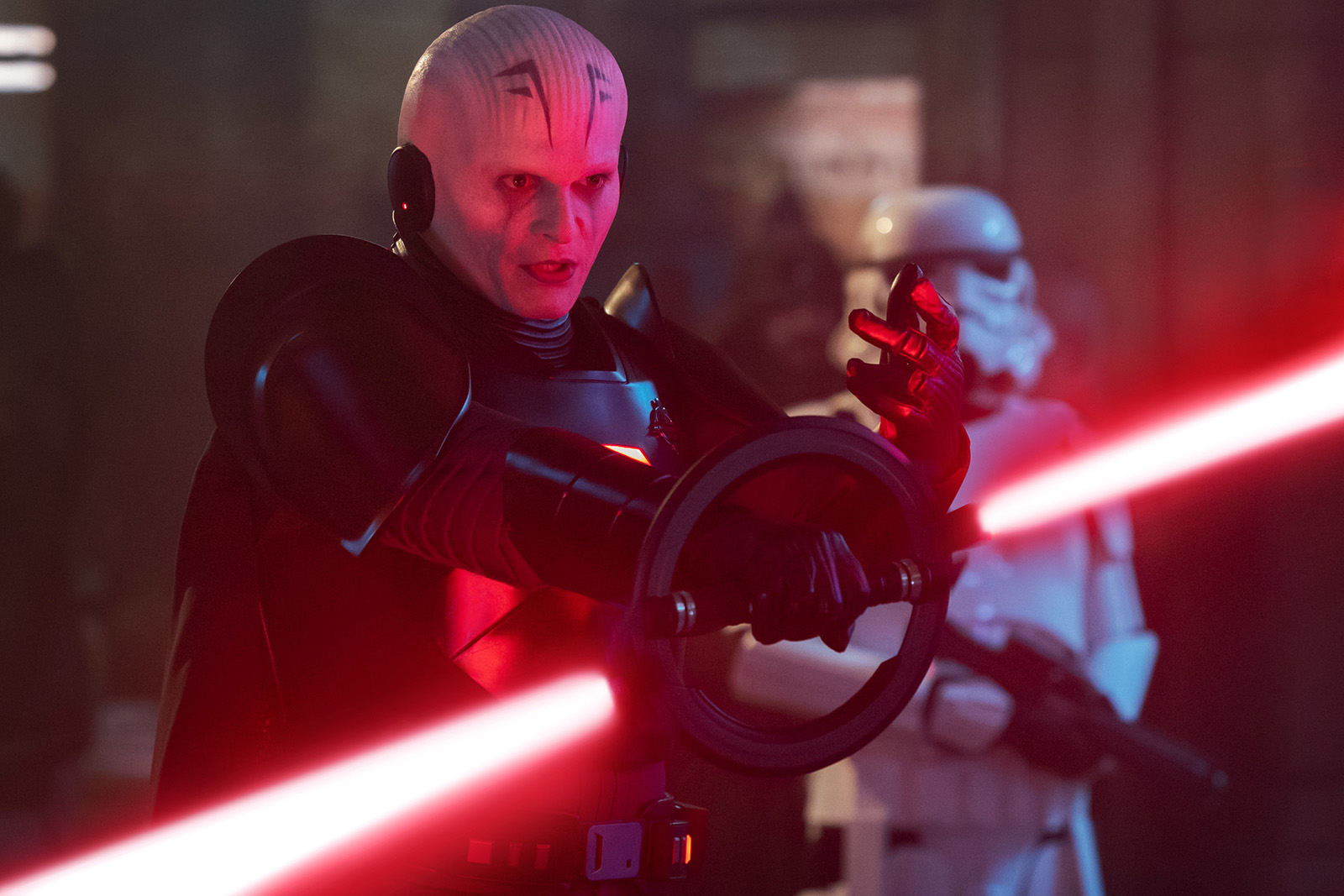
One of the things I will say, and Josh can probably talk more to this, there’s this one props guy who handles all the lightsabers. He was showing them to us, and one of them was Obi-Wan’s saber, but it was like a dog toy. It looked like real metal, but it was rubber. It squeezed. It didn’t make any noise, but it squeezed like a dog toy.
He told me, “When Obi-Wan runs, he has to have it on his hip. You don’t want him running and having this thing smacking against his hip.” It never occurred to me that they would have a prop like that.
MF: I don’t know why I write more than four questions with you two. I know I’m not going to get to all of them. But there are certain ones I want to make sure we get to.
Of course, that’s the finale, the lightsaber duel between Obi-Wan Kenobi and Darth Vader. There’s a couple of visual elements that I want to ask you about.
One is the intercutting. That lightsaber duel is taking place while Reva is hunting young Luke Skywalker. You’re going back and forth between those two sequences. There are some natural places where you can cut, like when Vader buries Obi-Wan under some rocks. There’s other times, mid-action, when you’re cutting back and forth.
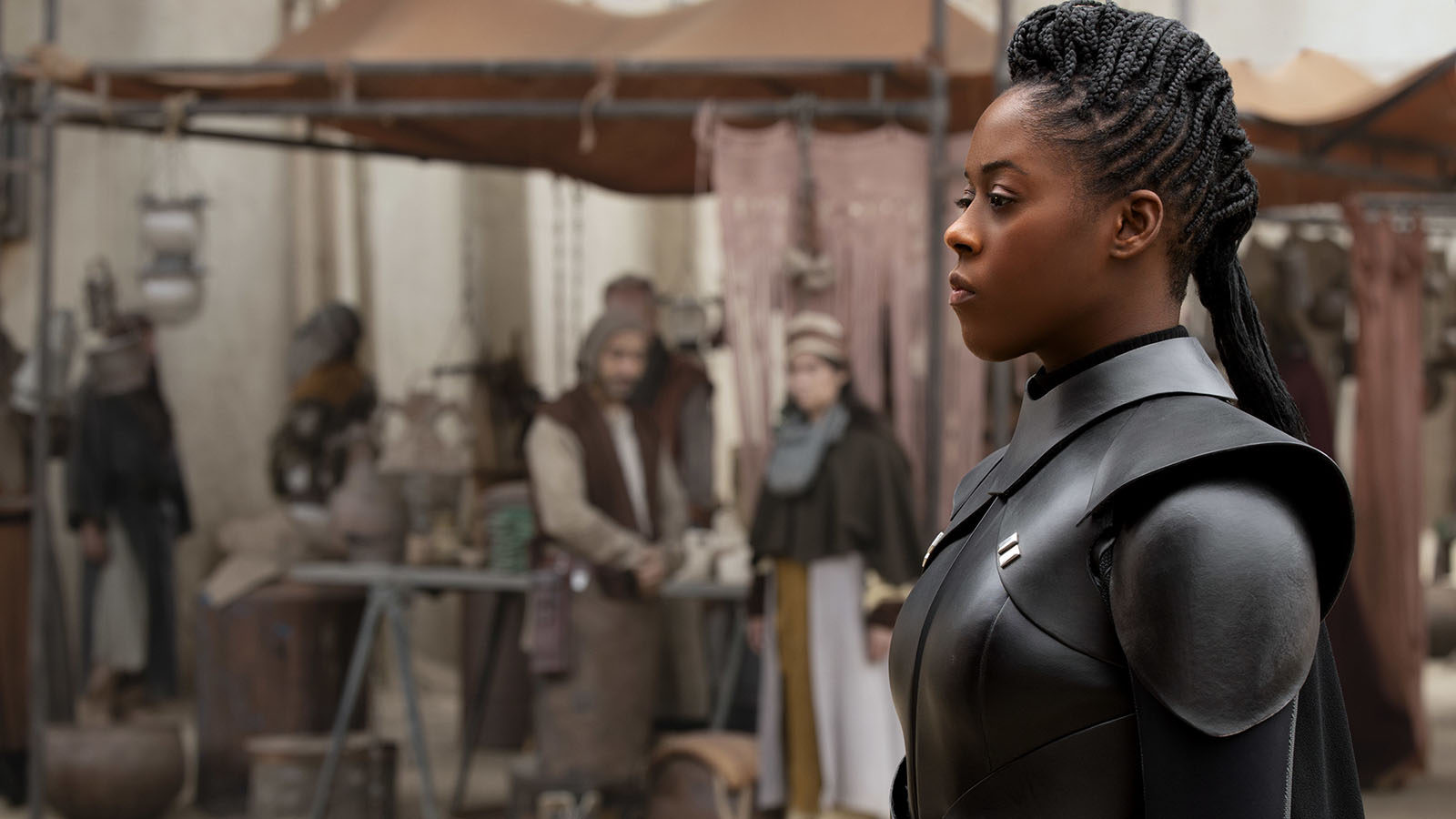
What are the clues for you, instinctively, as to when you can cut away to that other sequence?
Josh Earl: There was some design, obviously, from Deborah. She knew where she wanted to cut. But visually, it definitely changed. We definitely cut less and merged some areas together. Some of those were built to be preemptive wipes. The first section of the fight ends with Vader in a defensive stance and Obi-Wan jumps at the camera. Then it wipes straight into Reva entering the Lars farm.
There were those moments, but then there were times where, coming back into the scene, we would create a shot in post. We would take a shot and change it so it was super wide and rocks would come past, for example. We talked a lot about that shot. There was a moment where Kelley said, “What if we came through the rocks from way back here?” and we went through iterations of that.
Some of the transition points were predisposed and some had to come out of nowhere, because we merged parts of the fight. There were scenes that might have been shorter at one point and we intercut more. Ultimately, it was all merged together and we had to create those moments as they came.
Kelley, even that moment you created with Reva smacking the box in half was a transitional point. It was created to start there, then we cut into the rocks coming down. Now they’re fighting in the distance. That kind of stuff. It was a mixture of both.
Kelley Dixon: Originally, the way that it was written, the intercuts were in different places. When Reva is engaging with the Lars family for the first time, she ends up following Owen [played by Joel Edgerton] up the stairs, and they end up on a bridge.
We realized that just wasn’t very exciting. It wasn’t flattering to have her run and chase him. It didn’t look that great. So we were faced with, “What can we do that’s more dynamic and aggressive?”
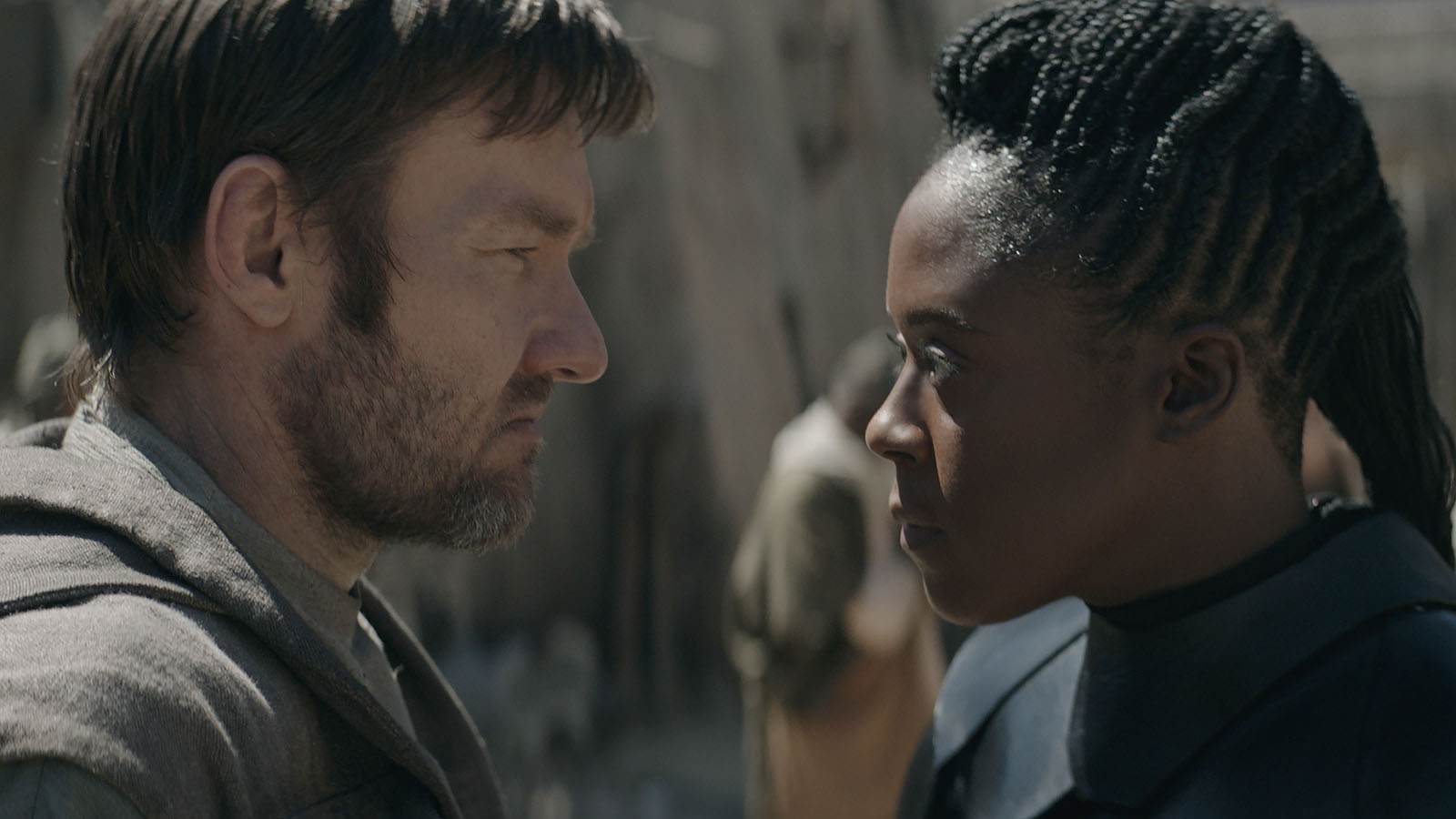
Deb said, “Can you find a shot where she’s just cutting across, and we’ll build it?” Owen had pushed these big canisters down the stairs at her and Deborah thought, “We’ll find a shot where she cuts across and we’ll build in postvis.”
We’re looking at Reva, so the box would come from the camera side and she would cut through it. That was not real. We found a shot where she sliced down, and that broke the box in two. The cool thing about working with lightsabers is they create a light trail that’s very exciting and dynamic. We used that to propel us into the flying-through-the-canyon shot. That shot was created as well, because that whole thing was shot on The Volume. They can do some amazing things. It’s a big space. They did fly a camera.
I learned a lot about what was possible on Star Wars. Deborah would come in and say things like, “That shot, where the two guys are fighting and the camera is flying through the canyon? Shrink that way down” and I would think, “What?” Let’s say that shot was a third of the frame size when it came into dailies. Now it’s 1/10 of the frame size. I was confused. But then I realized, “Heck, we’re creating the rest of the world anyway, so they can be any size we want.”
It really opened my mind to what is possible, and also taught me not to be stymied by the assumption that we don’t have enough money to create shots. The whole point is that we have budgeted to create these things. Working on smaller projects with very, very low budgets is really helpful. It was advantageous to have worked on smaller things, because I got incredibly resourceful. That helps me on bigger things where you don’t have the budget and still have to make something work.
Working on smaller projects with very low budgets…helps me on bigger things where you don’t have the budget but still have to make something work.
Learning how to use footage, reverse it, flop it, find other things and make them work, it helps. But on bigger things, really big things, I had to learn how to open my mind up to, “Hey, there’s money. We have money! If you want that spaceship to fly overhead, you can do that.”
MF: As much as we focus on the visuals of Star Wars, it really is the sound, the sound design, and the score that makes Star Wars what it is.
A great example of that is in the final battle. Obi-Wan Kenobi gets the upper hand on Darth Vader and cracks his helmet. Then, there’s this amazing sound design where we’re going back and forth between Hayden Christensen’s Anakin voice and James Earl Jones’s Darth Vader voice.
There’s some really cool sound design going on there. You get to play with that iconic Darth Vader breathing sound. Tell me about the sound design for that scene.
Kelley Dixon: It was very important to Deborah to come up with the right sound. She wanted it to be different from the other Star Wars. She wanted it to be its own thing, but also meld perfectly with the others.
We weren’t allowed to use any Star Wars thematic temp score. It sounded a lot like a Star Wars would sound, but that is more a credit to Josh. Josh worked with a lot of temp music on this, but we weren’t allowed to use the famous themes.
Every once in a while, Josh and our music editor Nick Fitzgerald would work in a little bit of theme and it would always get caught. “No, you can’t use that here!”
Darth Vader’s breathing is definitely one of the ways that you can understand what is happening with his character. Since he’s got the mask on, all you really have is his body movement and breathing, and a little bit of talking, if he actually is talking. But the breathing, I think, is more indicative in a lot of ways. We worked a lot with that. As far as the voices, once he was under the rocks, that was all us. It took a lot of passes. There were a lot of different iterations of what was going on.
We had to use so many different Avid tools to do that. At one point I was mixing down sounds. I used compression/expansion a lot, I used pitch shift a lot, I was rubberbanding, I was doing all kinds of stuff.
I had to take that source, mix it down, put it in, and save all of the iterations to each element because we had to be able to go back to the original and do it again. That was a huge amount of work.
Josh Earl: AudioSuite, baby.
Kelley Dixon: We were taking things that Darth Vader had said in Revenge of the Sith and using them. That was a huge amount of stuff.
But the main answer is, we had to do all of it in the room because Deb didn’t want any surprises once we got to the sound mix. She wanted to make sure that it was everything that she intended before it went any further.
Josh Earl: We definitely recorded some of the cracked mask. Heavy breathing was recorded off the mask, the Hasbro mask that they made, because we wondered, “Where is that clean? We have to get that clean.” I just recorded it at my house and we used it in the mix. It’s part of it.
Nick Fitzgerald did a great job. He did a bunch of effects for us. He was amazing with temp music and we got to team up a lot. It was awesome. He also did some of the distortion stuff, where the mask crack happens and you can hear Darth Vader. We didn’t have any of the James Earl Jones stuff yet, so it was on a temp mix. Nick helped us create that back-and-forth where you’re hearing Anakin, and then Vader would slip through. That was all predesigned. We put a lot of love and time into those moments. We wanted to make it sound right in the temp so Skywalker Sound could take it and make it even better.
Kelley Dixon: We were doing breaths and gasping for air. There was one effect that I was super proud of. I don’t know if it sounds like what I originally planned, but there was one where I took three different pieces of our samples and I placed them where you saw Hayden Christensen falter.
That’s a huge amount of work that you have to do, to make the whole thing natural. We were spending so much time on just getting the smallest of moments right.
We were spending so much time on just getting the smallest of moments right.
I remember when I put in the one where Hayden trips. Deb said, “Oh my God, that’s so perfect.” Again, it was where Obi-Wan was under the rocks. “What is he hearing?” and “How much is he hearing?” and “Did it fade out?”
I think one of the big questions at that point is, “What motivates him to get his mojo back and start fighting?” That was a big thing for Deb. She wanted to feel like he was done for.
I said, “But we know he’s not!” I’m not saying her question was wrong. I’m saying that’s not the real essence of all this. We need to be with the character. We need to be fully invested at that point.
How, as editors, can we make sure that the audience is fully invested, knowing that he’s an old man the next time we see him? We know he’s going to win. With stuff like this, where we know the answer as editors, it’s our responsibility to make the drama be where you’re invested, even though you know. Even if we didn’t know, this show is called Obi-Wan Kenobi. He’s going to make it.
MF: I’m prone to asking editors if, during the course of their project, they made themselves a part of the finished film. Usually, it’s through sound. Josh, being the uber Star Wars nerd that you are, are you in Obi-Wan Kenobi at all?
Josh Earl: Yes. When we were building these episodes for two, four, and six, there were a lot of temp Stormtroopers, there were some aliens, there was this and that. I was temping in my voice everywhere I could. Anytime there was like, uji-ka-da-borda, I just made alien voices. I voiced the Stormtroopers bumping into each other. “Hey, get out of the way!” I did all those things, all the way through episodes two, four, and six.
I even did the old country alien at the end. The voice I did for him was, “What do you need, kid?” This old country guy. Ultimately, they cast a country actor. That was a victory for me. I don’t care. I don’t have to be that guy. Otherwise, they ripped my voice out of most of it. You hire voice actors, all that fun stuff.
But at one point, Deb said, “We have to start swapping out Josh’s voice. He’s in this whole thing. But, Josh, do you want to do a voice?” And I said, “Whatever, Deb, it’s not a big deal.”
Kelley said, “Cut it out! He wants to do a Stormtrooper voice,” and I said, “Yeah, I totally would.” Deb said, “Okay, pick one,” and I said, “ I kind of want to be this Stormtrooper that gets killed by Obi-Wan… I want to be murdered by Obi-Wan. What’s the problem there?”
So, we tweaked the words, because I had done a lot of temp words. Some of them stuck in the end, which is fun. You know, Stormtroopers are Stormtroopers.
But those words, specifically, we went back and forth on. Deb actually had Joby Harold write lines for that. “How would he say this? Let’s give him a couple of lines.” So I have a couple of lines and then I’m brutally murdered by Obi-Wan. I can’t ask for a better moment in a Star Wars.
Stormtrooper number whatever, I’m that guy. I’m the guy who gets murdered during Princess Leia’s rescue. I’m the one who says, “Hey, what’s going on?” and then I got to do all the death noises and that fun stuff.
Kelley Dixon: It’s funny because Josh would do all these other things. He could say whatever he wanted in our temp stuff. There was one scene where Obi-Wan was hiding in a hallway. Stormtroopers go by, and Josh is saying things like, “Hey, do you know what we’re having for lunch? Is it pizza day, or..?” There were so many funny things. I would be working with the scene and just start laughing.
I have a couple of lines and then I’m brutally murdered by Obi-Wan. I can’t ask for a better moment in a Star Wars.
At the end of the day, Deborah didn’t really want the Stormtroopers to be funny. She wanted them to be serious. She didn’t want them to be joking.
MF: If anything comes out of this little talk, it should be the love that you both put into this project and how much you loved working together. It was a nerd-melt moment for both of you. I’m not going to let you off the hook, Kelley. I think you both really enjoyed being immersed in this world.
The only request I have is that, in the next interview, try and come out of your shells a little bit. Okay?
Josh Earl: We’ll try not to be so quiet next time.
Kelley Dixon: I think you got a lot of exclusives. Unfortunately, we have not been approached much until this nomination came up.
MF: And yet you’re so approachable.
Kelley Dixon: People don’t really know us. A lot of our friends and our peers know our history, but most don’t. I’m glad that we got a chance to work together. I hope we get to work together again. We’ve remained friends to this day.
I don’t think we fought at all. I don’t even think we disagreed. We worked together for a little more than a year, maybe a year and a handful of weeks on this. It was probably the most fun that I’ve had. Working with Josh made every day enjoyable and fun.
And we were allowed to bring dogs to the set. I had a puppy that I got right after production ended. He was twelve weeks old when I got him. Then Deb walked in the room and said, “I was promised puppies,” and there I was with a little black lab puppy.
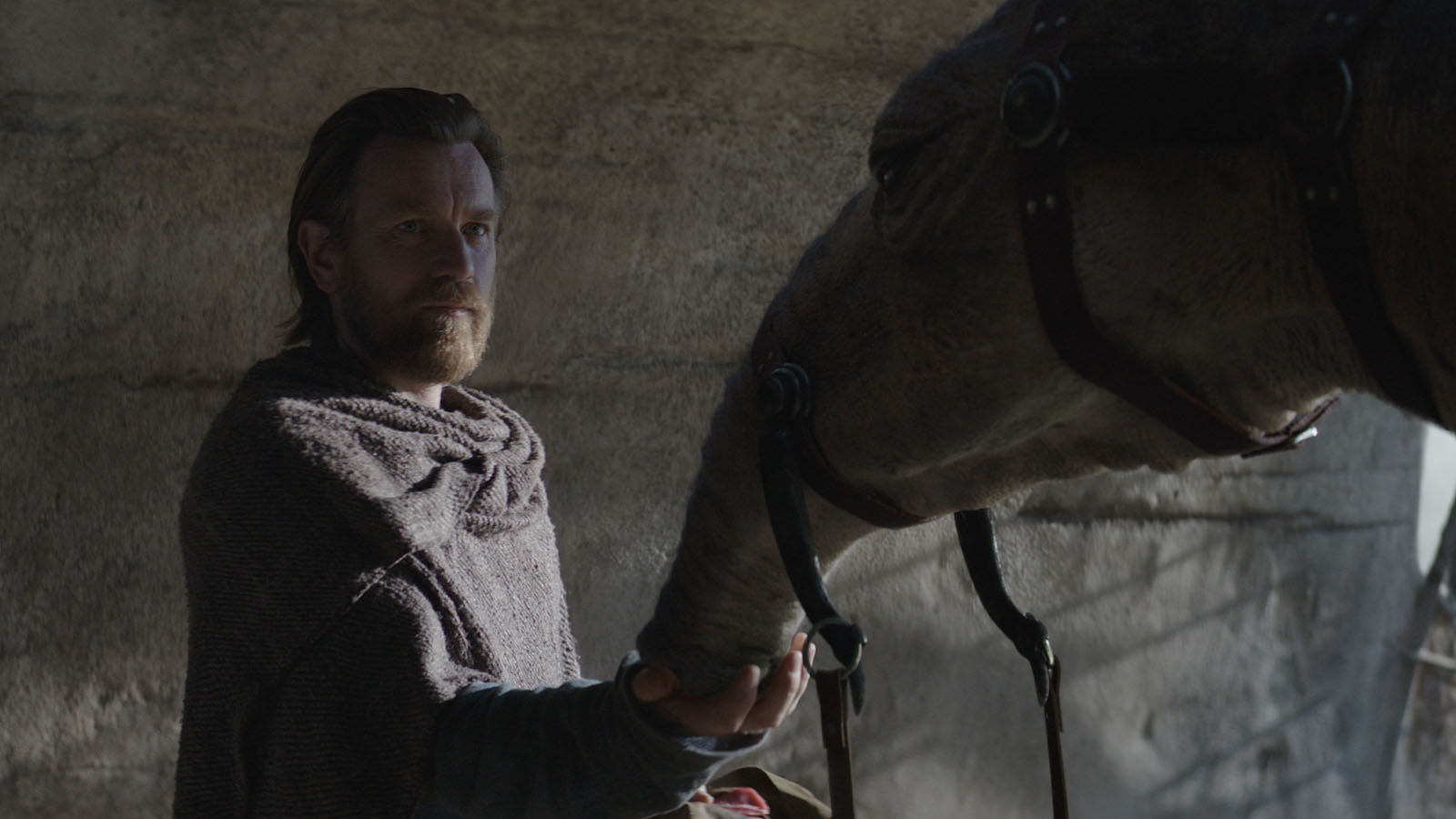
Deb’s assistant had a two-year-old golden retriever that she would bring by. Dave Filoni has some kind of Irish wolfhound that his assistant would bring by, and they all would run together.
We had a big office with very few people because of COVID. We had a lot of space, and the dogs would run. It was a really enjoyable environment. It was one of my very favorite cutting rooms.
It was one of my favorite cutting rooms probably ever, because I had a window. I’m a baseball fan, and my room was at Manhattan Beach Studios. My window was at the very south end of the lot and it looked out onto a baseball field. There was baseball there all summer long. I could stop cutting and go watch baseball for a couple of minutes.
It was a really good experience in so many ways, other than being on Star Wars, which was cool in and of itself.
Josh Earl: I second all of it.
MF: It sounds like it was a great time. Kelley, when this interview comes out, don’t be surprised if your opening quote is, “I was promised puppies.”
Kelley Dixon: I didn’t say that! My director said that.

